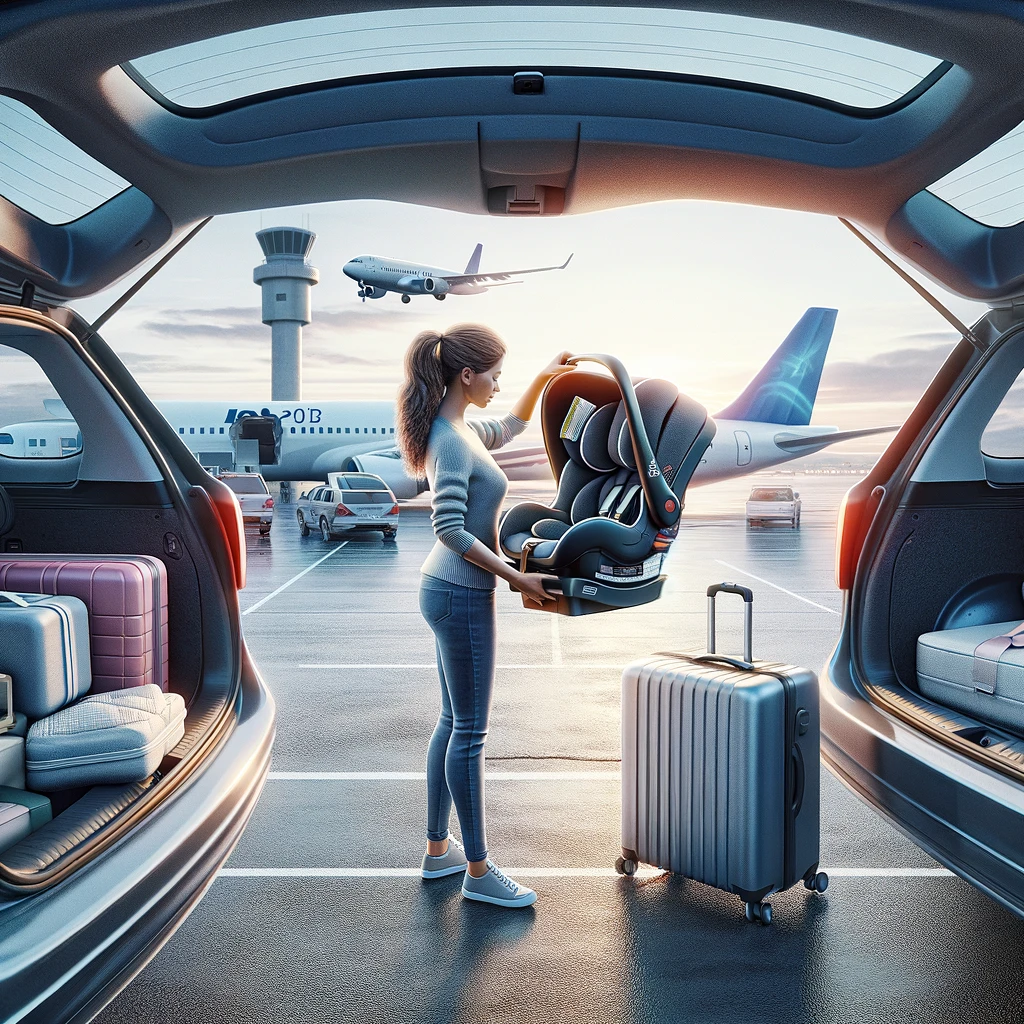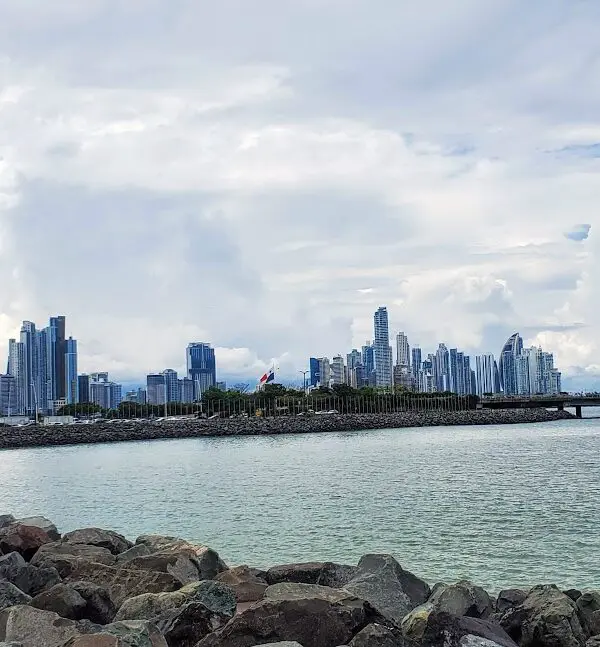
Before becoming a mom, I saw parents at the airport traveling with babies with hands full and so much gear, all while carrying a little one. I was like, “WOW” they are amazing, and that is a lot to do!
I’m not going to lie. Once, I had a little one of my own, I was VERY intimidated about navigating air travel with my 4-month-old baby.
Traveling with young ones often means bringing along an infant car seat.
As a mom, I know that ensuring your child’s safety and comfort is paramount, and how you pack their car seat for a flight plays a significant role.
This guide will walk you through the best practices for packing a car seat for air travel, from choosing a travel car seat to navigating airline policies.
Table of Contents
- Should You Check Your Car Seat or Use it In-Flight?
- Understanding Airline Policies
- Choosing the Right Car Seat
- Packing Options for Your Car Seat
- Using the Car Seat on the Flight
- Tips for Protecting Your Car Seat
- What to Do in Case of Loss or Damage
Should You Check Your Car Seat or Use it In-Flight?
Before you think about how to pack your car seat for air travel, you must make a decision. Should you check your car seat or use it in flight?
That’s a question only you can answer.
Many parents opt to bring their child’s safety seat on board, providing more security. To do this, you must book a separate seat for your child.
Alternatively, if your baby is under two, they can sit as a lap child with you. I personally choose to check our car seat and fly with my baby as a lap child.
It’s all about preferences, and it’s helpful to know the policies of the airline you are flying with to make the best-informed decision for your family.
Understanding Airline Policies
It’s crucial to familiarize yourself with your airline’s policies regarding car seats. Each airline has its own set of rules that can significantly impact how you use or check your car seat.
For instance, most airlines allow car seats and strollers to be checked for free, while others might charge a fee. I’ve complimentary checked our car seats and strollers several times with Delta and American Airlines.
If you choose to secure your baby in a car seat while flying, you should have a separate seat booked. However, if you haven’t booked a separate seat for your kiddo, or if no extra seats are available, don’t worry.
An airline representative will assist you in checking the safety seat at the gate. This way, you can travel with peace of mind, knowing your child’s safety is ensured.
Additionally, there are guidelines on the size and type of car seats allowed in the cabin. This information is typically available on the airlines website, but don’t hesitate to call customer service for clarification.
Awareness of these policies helps pack appropriately and ensures that you don’t face any surprises at the airport. Remember, knowledge is power, especially when traveling with your little one’s essentials.

Choosing the Right Car Seat for Airline Travel
Selecting the right car seat for air travel can significantly ease your journey. When considering how to pack a car seat for air travel, look for a compact and lightweight model.
A less bulky car seat is more accessible to maneuver through busy airports and more likely to comply with airline size restrictions for checked baggage or in-cabin use. Additionally, if you plan to use the car seat on the plane, ensure it’s FAA-approved.
This approval is usually clearly labeled on the seat itself. A travel-friendly car seat meets airline requirements and provides your child with safety and comfort during the flight. Investing in a car seat specifically designed for travel can make a world of difference in your overall experience.

How to Pack a Car Seat for Checked Baggage?
You have a couple of options regarding how to pack a car seat for air travel. Using the car seat’s original box is an excellent choice if you’ve kept it. This box is specifically designed to protect the car seat during transportation. However, consider investing in a well-padded car seat travel bag if the original box isn’t available. These bags offer protection against bumps and scratches and make the car seat easier to carry.
Another tip on packing a car seat for air travel is to utilize the car seat as extra luggage space. You can place diapers, blankets, or soft toys in the seat, maximizing your packing efficiency. Just ensure these items don’t compromise the seat’s safety.
Some airlines also provide large plastic bags at the check-in counter to cover car seats. While this option is convenient, it offers less protection than a dedicated car seat bag. Regardless of your choice, always ensure the car seat is correctly labeled with your contact information.
Using the Car Seat on Your Flight
If you plan to use the car seat during the flight, it’s essential to ensure it is FAA-approved. FAA-approved car seats are designed to fit securely in an aircraft seat, providing the best protection for your child. When packing your car seat for this purpose, keep it easily accessible, as you must install it in the plane seat.
Always check with your airline about their specific policies for using a car seat onboard. Some airlines may require you to book a separate seat for your child, while others might have restrictions on where car seats can be placed in the cabin. Knowing these details helps in planning and ensures a smoother boarding process.
Using a car seat on the flight keeps your child safe and offers them a familiar and comfortable spot, making the journey more enjoyable for both of you.
Tips for Protecting Your Car Seat
Ensuring your car seat arrives in the same condition it left is a top priority. Here are some tips on how to pack a car seat for air travel to protect it:
Use Bubble Wrap or Padding: Wrap the car seat in bubble wrap or use other padding materials, especially around areas more prone to damage.
Secure Loose Parts: Ensure all straps and adjustable parts are tightly secured. Loose parts can get caught or damaged during handling.
Waterproofing: Consider a waterproof cover or bag, especially if traveling to a destination with unpredictable weather. This keeps the car seat dry and clean.
Labeling: Label your car seat with your name, contact information, and destination. This helps in case it gets misplaced.
Photograph Your Car Seat: Take photos of your car seat before packing it. In case of damage, these photos will be helpful for insurance or compensation claims.
Applying these tips will reduce the risk of damage and give you peace of mind as you travel.

What to Do in Case of Car Seat Loss or Damage?
Despite your best efforts in packing, there might be situations where your car seat is lost or damaged during air travel. Here’s what you can do:
Report Immediately: If your car seat is damaged or missing upon arrival, immediately report it to the airline. Most airlines have a baggage service office in the baggage claim area.
Thankfully, we could fix the damage to our car seat after air travel. If it were more serious, we would have followed these steps.
Keep Documentation: Retain all travel documents, such as boarding passes and baggage claim tickets. These will be necessary for filing a claim.
Understand Airline Policies: Each airline has its policy for handling lost or damaged items. Inquire about their process and what compensation you’re entitled to.
File a Claim: Follow the airline’s procedure to file a claim. Include all relevant information and, if possible, provide photos of the damage for a stronger case.
Consider a Temporary Replacement: If your car seat is lost, ask the airline if they can provide a temporary replacement. Some airlines may offer this service.
Preparing for these situations can help alleviate stress and ensure a quicker resolution.
Knowing how to pack a car seat for air travel is essential for any traveling parent. Each step is vital for a smooth journey, from choosing the right car seat to understanding airline policies. Remember, the safety and comfort of your little one are paramount. You can confidently tackle this part of your travel plans with these tips and guidelines.


